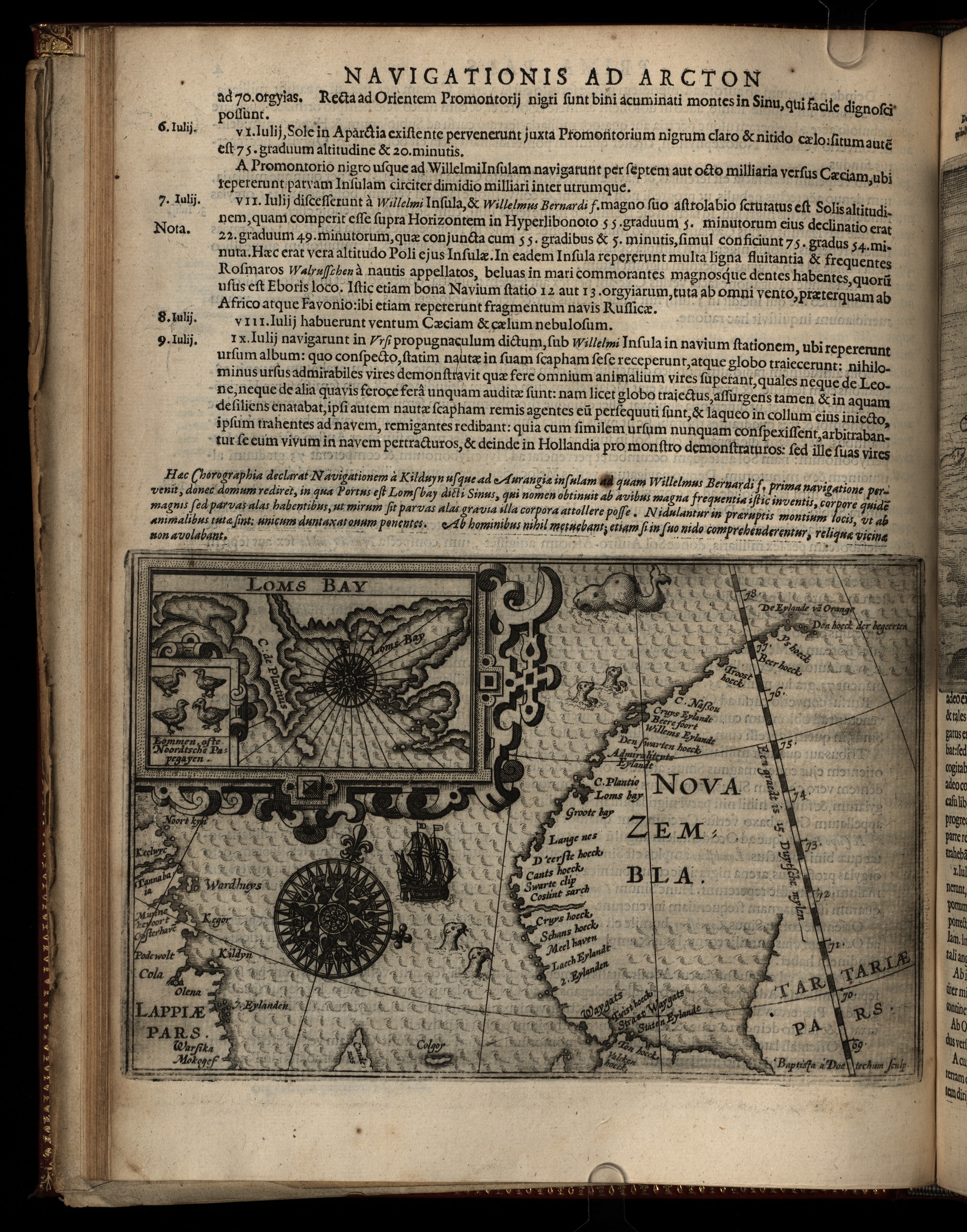The Northeast Passage
In the 16th century, the Cape of Good Hope route was tightly controlled by the Portuguese, and very few fleets reached Asia by the West (via Cape Horn). The Dutch, driven by the promise of Eastern riches and enabled by their navigational prowess, were motivated to find alternative routes to these two. The majority of Dutch travel narratives were reprinted, often in abridged form, and frequently illustrated with prints from the original editions, in the Lesser Voyages. Gerrit de Veer’s third travelogue, published in the third volume of Lesser Voyages (1598), retells one of the most remarkable of these expeditions. Having left Amsterdam in May 1596, a fleet captained by Willem Barentsz attempted to reach China via the northern waters of the Eurasian landmass. Soon after the discovery of Spitsbergen, the ships became trapped in the ice, and the Dutch expedition was forced to spend the winter on the coast of Nova Zembla. Only some of the crew members survived the six months spent in a makeshift shelter, and ultimately only twelve survivors, including Gerrit de Veer, made it back to Amsterdam in September 1597, having travelled nearly 2800 km in simple rowboats. Barentsz himself died in the treacherous return journey, giving his name to the sea that claimed his life.

This travelogue was published in Amsterdam in Dutch, Latin and French, along with a German version, published in Nuremberg, with illustrations in all cases. The De Bry brothers published an abridged German edition the following year (1599) in Frankfurt, followed by a Latin version in 1601. These editions were illustrated with twenty-three prints, most of which were copied from the plates used in the earlier editions. The prints were therefore never originals, but were of a higher quality than the initial series. In some cases, the prints combine elements from two separate models. In addition to the third part of the Lesser Voyages, the Bibliotheca Bodmeriana holds both the Latin and French editions of the travelogue, published in Amsterdam in 1598 by Cornelisz Claes. All three are fully accessible in digitised form:

